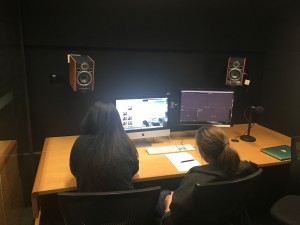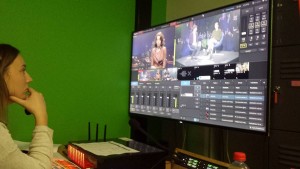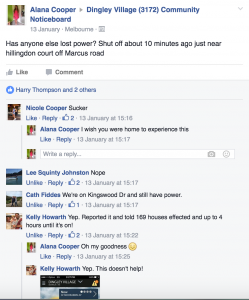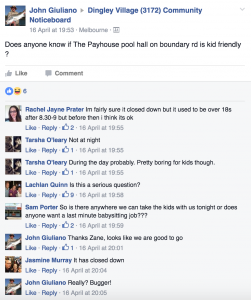When I chose the studio Good Form, I was unaware of the work we would be required to do. On the first day I was delighted to discover we were actually creating a legitimate comedy web series. My initial panic was thinking how the hell am I going to write a funny script?! Soon enough we were introduced to the creative writing students who pitched their web series ideas to us. I immediately jumped on Tom’s ‘Jeff and Janes Quality Fun Times’ and I never once regretted it.
The J+J team got to work right away, it consisted of media students, Gabby, Anie, Luka and I, as well as writers, Tom, Charlotte, Sam and Hamish. We clicked instantly and began getting excited about the show we were producing. Roles were divided amongst us media students and with 4 episodes on the cards it was easy to rotate positions and get a turn at everything.
We planned on using one day to shoot everything in the RMIT studios, however due to a peanut related emergency we had to come back the following week. An incident which I believed worked in our favour, as we had learnt from the previous weeks’ mistakes, and you can tell even in the final episodes posted that Episodes 2 and 4 are much better quality.
This was mainly due to the lighting and white balancing. In episodes 1 and 3, the skin colour was glowing orange, and the general shot was over exposed. During editing Luka and Gabby (their episodes) were able to alter this to the best of their ability, however you’ll notice the colour still looks a little washed out.
Luckily for me, I directed my episode 2 on the second week. This time we were far more prepared and ensured we checked the white balancing every time the camera changed position. The end result was impeccable and required no further altering. Throughout the semester I learnt a lot about post production editing, particularly how to use a green screen. I became far more comfortable with Premiere Pro and the X200 cameras. I got more hands on experience in the studio as well, including boom handing and general camera operation.
Based on my experience with production I’ve also learnt how important communication is within the team. I found at times a couple of my group members clashed as both their ideas had to be used. I found it a little annoying especially considering the director should be the main person in charge. In the ‘real world’ a camera operator wouldn’t be arguing with the directors shot choice, which I found happening far too often. As well as this, during editing, agreeing on the aesthetic of the show was a nightmare. You would notice the difference between episode 1 and 2 (for example). Luke edited episode 1 and believed ‘mistakes’ would add to the aesthetic of the show. However, my episode 2 was not like that at all. I didn’t like the way episode 1 was edited and it didn’t fit in with the rest of the episodes. Steiner told us during the pitch to be careful of what you ‘mess up’, and said that audio should always be on point. I followed his advice, unfortunately others didn’t and I was worried it wouldn’t be an obvious and purposeful mistake to our audience. I tested this when showing my sister episode 1, she immediately thought it was a mistake and didn’t find it funny, hence my concern for the rest of our viewers.
Despite this I truly believe we worked well as a team. I told Luka how I felt about his ideas however at the end of the day it was his episode to direct and edit. I was happy with my episode and (just quietly) it is the writer’s favourite. We responded well to feedback from everyone that gave it to us, including classmates, Steiner, Jeremey and audiences. Earlier on we found some family and friends were confused by the concept of the show, in response to this we posted more promos and even spent an afternoon filming the most random acts of Jeff and Jane that we could use as teasers. Tom and Charlotte were too good for words in their roles as Jeff and Jane. So to was Sam as Mick and Dr. Dren, even I made an appearance which I’m not bragging about ha-ha.
In regards to the rest of the semester, Shannon and I worked together to complete the weekly update for week 2. We jumped on it early to ensure it was done before things started to get busy. In all honesty week 2 was quite mellow and there wasn’t much to add. For the end of semester presentation, us J+J team worked together to form a little promo/teaser. It was basically a mini highlight reel of some classic Jeff and Jane moments.
Above all, I’m so happy with the end result of Good Form. Jeff and Janes Quality Fun Times is a laugh and a half and is something I will always be proud to say I was a part of. I’d love to go back through the footage and make a gag reel, as there was so much laughter throughout the filming I went home with sore cheeks. We put so much work into this whole semester and it never once got boring. If someone in our group didn’t know how to do something, there was always another one of us who would teach them how. The talent in our team was so diverse it made for such a smooth production of a quality comedy web series.







Recent Comments